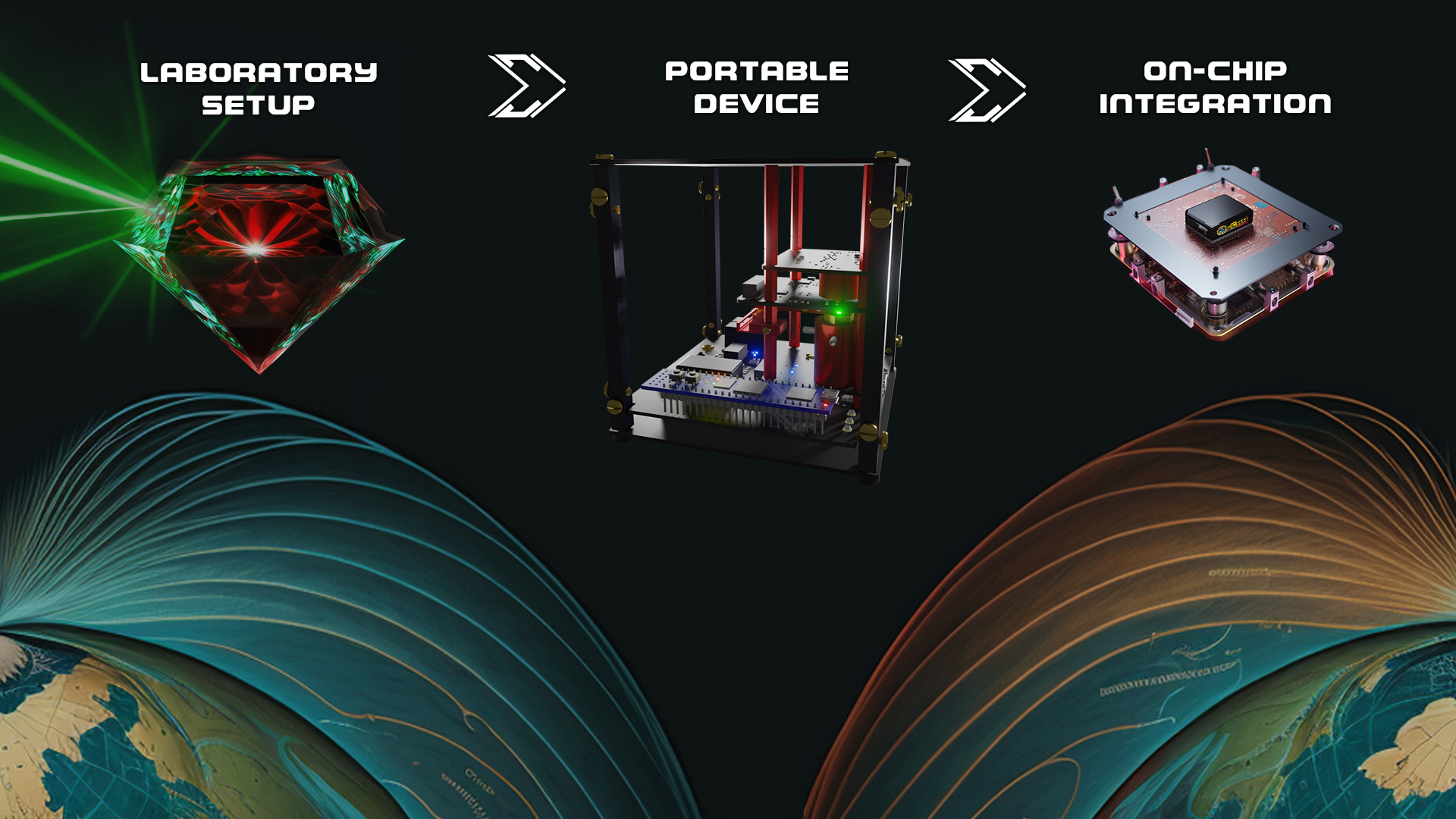Duration: 18 months
Magnetometry is a crucial sensing application for studying celestial bodies and space weather. However, implementing magnetometers in space missions faces significant challenges such as size, weight, power constraints, and harsh environmental conditions. Traditional magnetometers are limited in sensitivity, accuracy, and long-term stability due to interference caused by spacecraft electromagnetic noise and harsh environmental conditions such as radiation and temperature fluctuations. We propose to explore a novel magnetometry concept, based on the nitrogen-vacancy (NV) center in diamond to construct a fully integrated NV-based quantum magnetic field sensor to address these challenges. NV sensors have several unique properties, such as theoretical sensitivity down to fT/√Hz, wide linear dynamic range (fT - T), and bandwidth (DC - MHz), and they are capable of both scalar and vector magnetometry. Our proposed sensor targets a volume of < 0.1L and a performance of 100pT/√Hz. Combining the temperature sensing capabilities of NV sensors and miniaturization will enable us to correct for any device temperature influence on the magnetic field readout precision and thus further enhance its performance under harsh conditions. Achieving a high long-term stability of a fully integrated NV sensor could allow for the deployment of a wide dynamic range single magnetometer, compared to the two separate ones used in ESA's SWARM mission. It could also make it a payload candidate for implementation in a magnetometry nanosatellite constellation comparable to the current ESA study on NanoMagSat. We believe that a fully integrated NV sensor has the potential to significantly benefit the field of space magnetometry by providing a compact, accurate, and long-term stable sensing solution.

